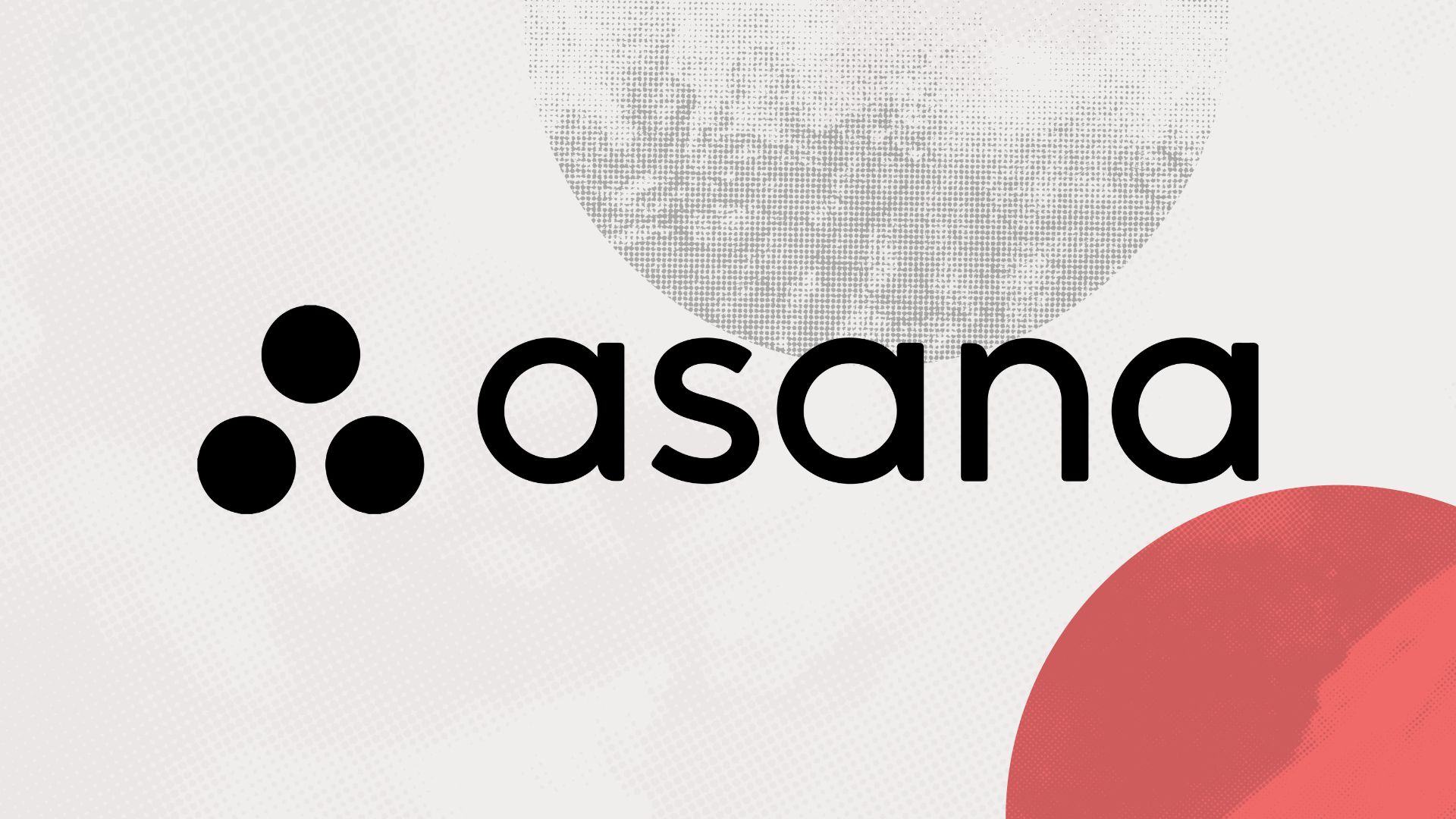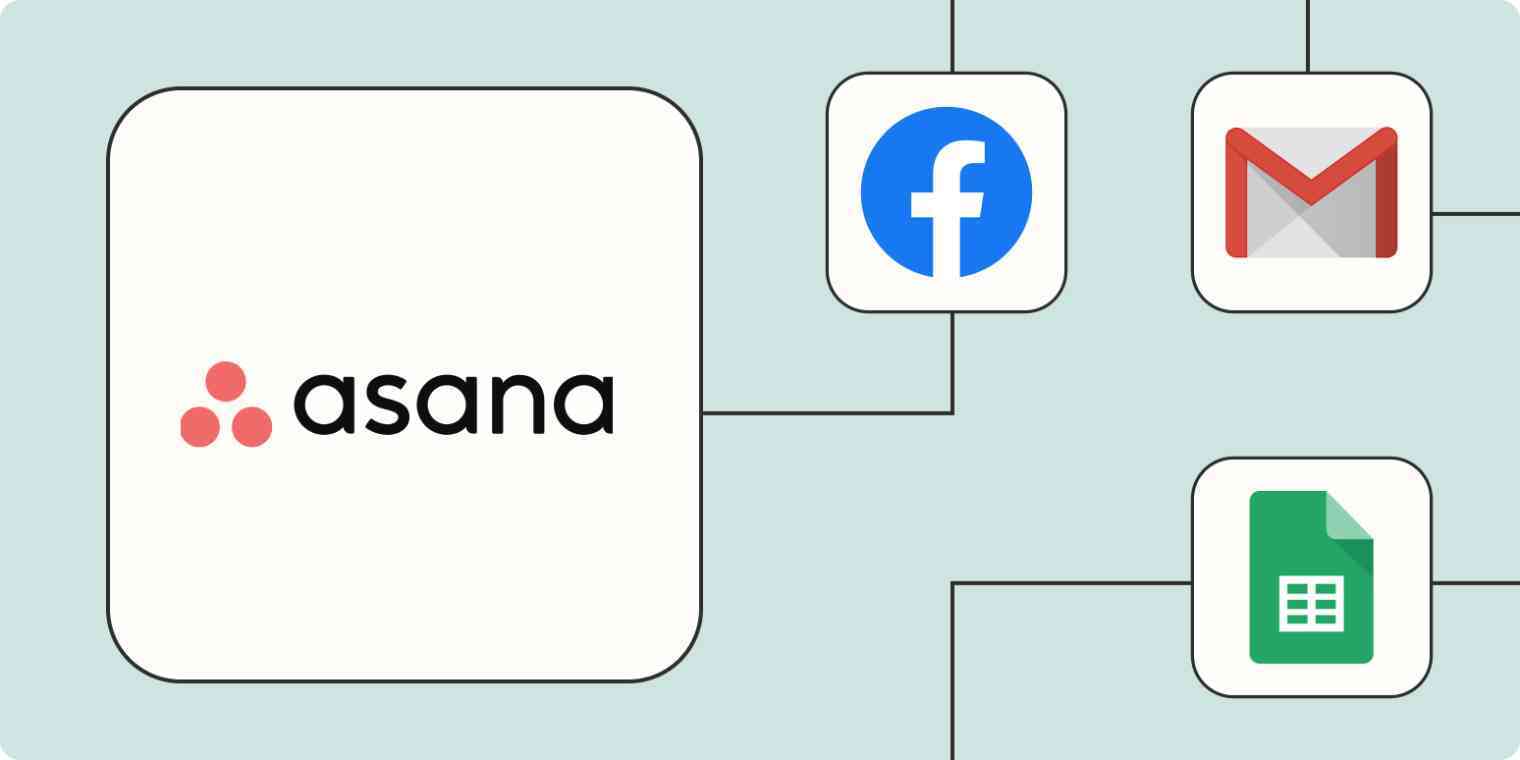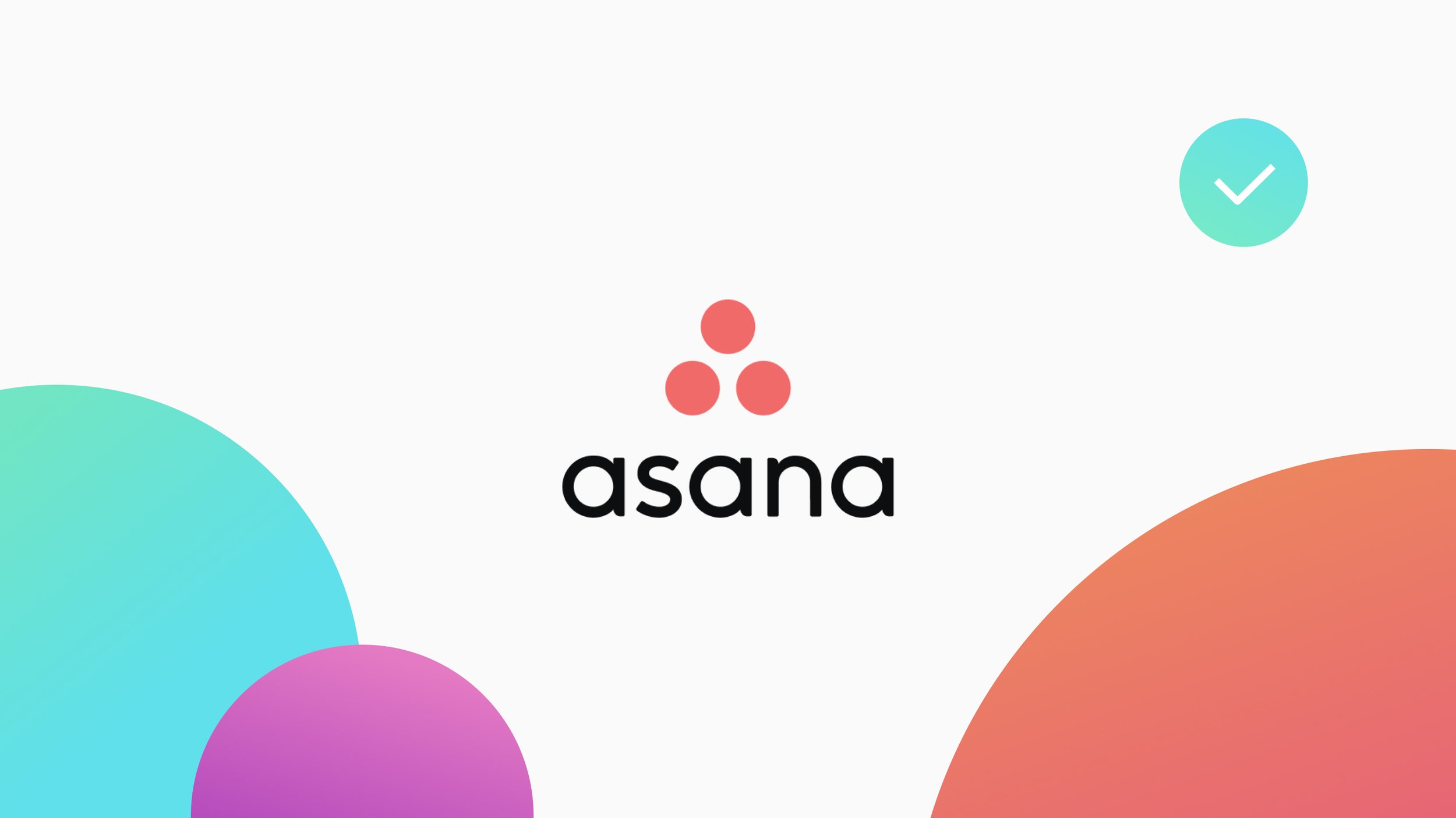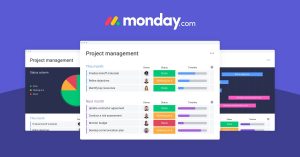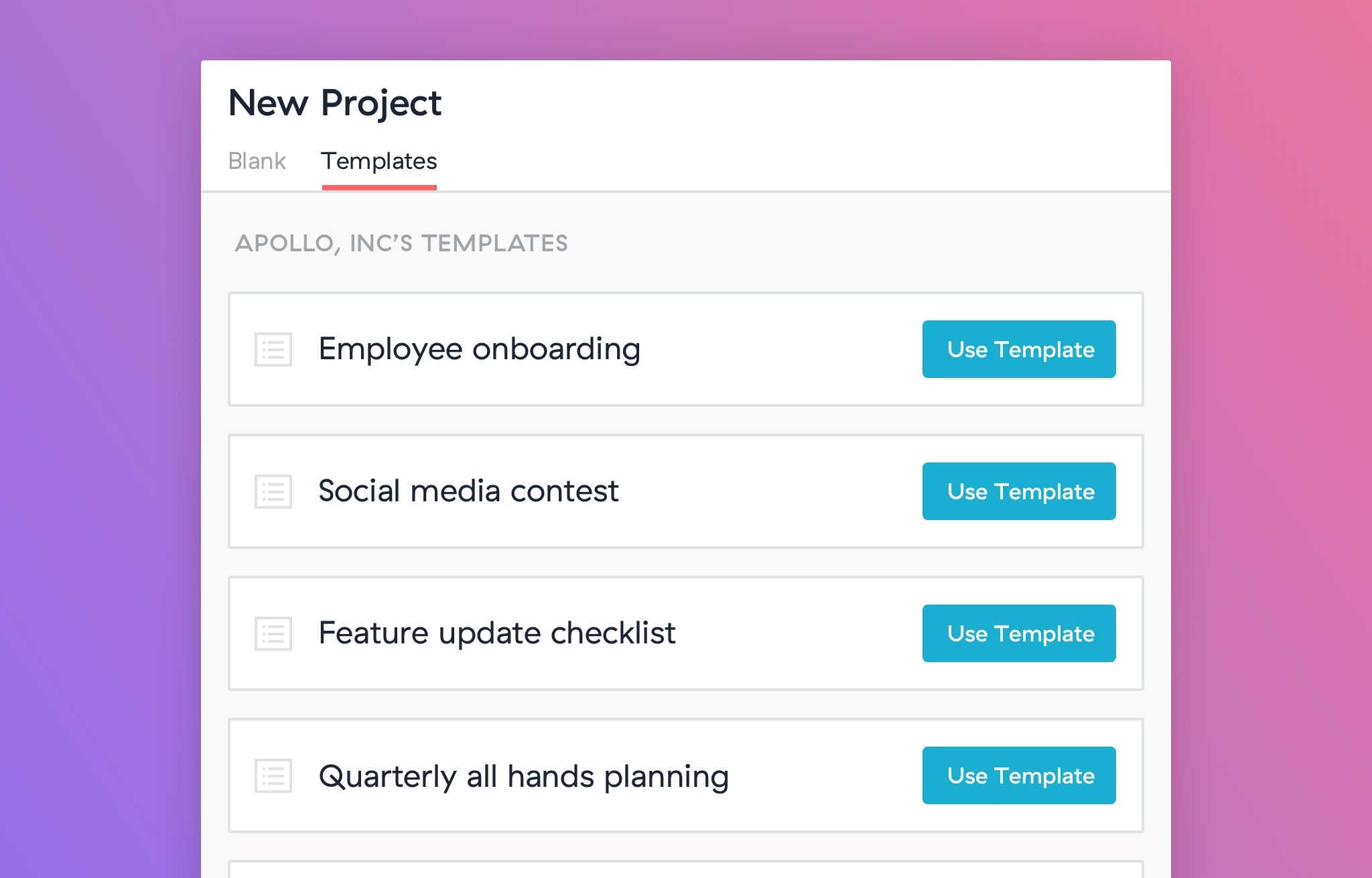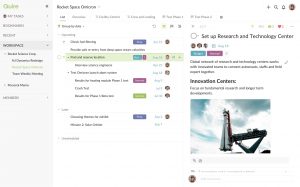Introduction
Welcome to the world of Asana – the leading work management platform that helps teams organize, collaborate, and achieve their goals efficiently. With its intuitive interface and robust features, Asana has become a trusted partner for businesses of all sizes, from startups to Fortune 500 companies.
Asana was founded in 2008 by Dustin Moskovitz and Justin Rosenstein, two former Facebook employees who saw a pressing need for a better way to manage work and communication within teams. They envisioned a tool that would eliminate the chaos of endless email threads, scattered spreadsheets, and missed deadlines. The result was Asana – a powerful platform designed to empower teams and optimize their productivity.
At its core, Asana is driven by a mission to help humanity thrive by enabling teams to work seamlessly and achieve their goals. The company’s key values revolve around clarity, teamwork, and resilience, which shape every aspect of their work and product development.
With over 75,000 organizations and millions of users worldwide, Asana has revolutionized the way teams collaborate and manage their projects. Whether you’re working on a small cross-functional team or a large enterprise project, Asana provides the tools and flexibility needed to keep everyone aligned and focused on the right priorities.
In this article, we will delve into the key features of Asana, explore how it works, and highlight the numerous benefits it offers to teams and organizations. We will also touch on industry recognition and customer testimonials to give you a comprehensive understanding of why Asana is the go-to work management platform for businesses across the globe.
So, let’s dive in and discover how Asana can transform the way you and your team work together!
Background of Asana Company
Asana was founded in 2008 by Dustin Moskovitz and Justin Rosenstein, who both had first-hand experience working at Facebook and recognized the need for a better way to manage work and collaboration within teams. Frustrated with the constant flood of emails, disjointed communication, and lack of visibility into project progress, they set out to create a solution that would streamline teamwork and boost productivity.
Moskovitz and Rosenstein believed that work management should be more than just a to-do list – it should empower teams to work together seamlessly, with clarity and transparency. They wanted to create a tool that would enable teams to stay organized, communicate effectively, and ensure that everyone was working towards the same goals.
After years of development, Asana was officially launched to the public in 2011. Since then, it has grown rapidly, attracting teams and organizations from a wide range of industries. Today, Asana boasts an impressive user base of over 75,000 organizations and millions of active users worldwide.
Driven by its mission to help humanity thrive, Asana continues to evolve and innovate, constantly adding new features and enhancements to meet the evolving needs of its users. Its commitment to providing an exceptional user experience has made it a go-to solution for not only startups but also Fortune 500 companies.
In terms of funding, Asana has received significant support from investors over the years. It has secured numerous rounds of funding, including a $75 million round in 2018 and a $200 million round in 2019. Asana has undoubtedly established itself as a leader in the work management space, and its strong financial backing further solidifies its position in the market.
As a company, Asana is known for its open and collaborative culture. They value teamwork, transparency, and empathy, and these core values are reflected in the way they operate and the relationships they build with their customers. Asana is committed to continuously improving its product and providing top-notch customer support, making it a trusted and reliable partner for teams and organizations worldwide.
In the next section, we will explore Asana’s mission and values, shedding light on what drives the company’s vision and product development.
Asana’s Mission and Values
At the core of Asana’s philosophy is a clear and powerful mission: to help humanity thrive by enabling teamwork to flow effortlessly. This mission drives everything they do, from their product development to their interactions with customers and employees.
Asana’s mission is fueled by a set of key values that guide their decisions and actions:
- Clarity: Asana believes that transparency and clear communication are essential for successful teamwork. They aim to provide a platform that ensures everyone has a clear understanding of goals, priorities, and progress to foster alignment and collaboration.
- Teamwork: Asana recognizes the power of collaboration and the collective force that comes from working together. They promote a culture of teamwork, encouraging teams to break down silos and leverage each other’s strengths to achieve shared objectives.
- Resilience: Asana understands that setbacks and challenges are a natural part of any endeavor. They foster a resilient mindset that encourages teams to adapt, learn from failures, and persist in the face of obstacles.
- Customer Focus: Asana is committed to delivering exceptional value to its customers. They prioritize customer needs and gather feedback to continuously improve their product and provide the best possible user experience.
These values are deeply embedded in Asana’s culture, influencing the way they operate and the decisions they make. By adhering to these principles, Asana creates an environment that empowers teams to collaborate effectively and achieve their full potential.
Furthermore, Asana recognizes the critical role diversity and inclusion play in driving innovation and success. They are dedicated to fostering a workplace where everyone feels respected, valued, and empowered to contribute their unique perspectives and ideas.
Asana’s mission and values go beyond mere words; they are evident in the company’s commitment to positive social impact. As part of their commitment to helping humanity thrive, Asana actively supports nonprofit organizations through initiatives like the Asana Impact Fund. This fund provides resources and support to nonprofit organizations that share their mission of promoting equal access, open dialogue, and inclusive communities.
The next section will provide an overview of Asana’s product and highlight its key features that empower teams to achieve their goals.
Product Overview
Asana is a comprehensive work management platform designed to help teams organize, track, and collaborate on their projects and tasks. With its user-friendly interface and robust set of features, Asana allows teams to streamline their workflows, improve productivity, and achieve their goals efficiently.
At its core, Asana provides a centralized workspace where teams can create projects and break them down into individual tasks. Each task can be assigned to team members, given due dates, and organized into sections or categories, providing a clear and structured view of the work at hand.
Asana’s intuitive interface makes it easy for teams to collaborate and communicate effectively. With the ability to comment on tasks, mention team members, and attach relevant files, discussions can take place directly within the context of the work, eliminating the need for scattered email threads.
One of Asana’s standout features is its ability to visualize project timelines with its Timeline view. This view allows teams to see how tasks and projects are interconnected, ensuring dependencies are managed effectively and deadlines are met.
Another powerful feature of Asana is its customizable dashboards. Teams can create personalized views that display the information and metrics most relevant to their workflow. Whether it’s tracking progress, monitoring key milestones, or viewing workload distribution, the dashboards put critical insights at your fingertips.
For teams working on recurring tasks or processes, Asana’s automation feature can be a game-changer. By setting up rules and triggers, teams can automate repetitive tasks, saving time and reducing the risk of human error.
Collaboration doesn’t stop within Asana’s interface. The platform offers seamless integrations with popular communication and productivity tools such as Slack, Microsoft Teams, Google Drive, and more. This ensures that teams can work within their preferred ecosystems without siloed information.
Asana is a versatile platform that caters to the needs of various industries and team structures. Whether you’re managing complex projects, running agile sprints, or simply organizing your daily tasks, Asana provides the flexibility and scalability required to adapt to your unique workflow.
In the next section, we will explore the key features of Asana in more detail, giving you a deeper understanding of how they can empower your team.
Key Features of Asana
Asana offers a wide range of features that empower teams to effectively collaborate, stay organized, and achieve their goals. Let’s explore some of the key features that make Asana a popular choice for teams worldwide:
- Task Management: Asana provides a centralized platform where teams can create tasks, assign them to team members, set due dates, and track progress. This feature ensures that everyone knows what needs to be done and when, improving accountability and productivity.
- Project Planning and Organization: With Asana, teams can create projects and break them down into smaller, manageable tasks. Project timelines and milestones can be set to provide a clear roadmap and ensure that projects are completed on time.
- Collaboration and Communication: Asana’s commenting feature allows team members to have discussions and provide updates directly within tasks. This eliminates the need for lengthy email chains and keeps all relevant information in one place.
- Task Dependencies: Teams can set task dependencies in Asana to ensure that tasks are completed in the right order. This helps prevent bottlenecks and ensures that projects progress smoothly.
- Customizable Dashboards: Asana’s dashboards allow teams to create personalized views that display the information and metrics most important to their workflow. This helps teams stay focused on the key aspects of their work.
- Automation: Asana’s automation feature allows teams to create rules and triggers that automate repetitive tasks. This saves time and reduces the risk of errors, enabling teams to focus on more valuable work.
- File Attachments: Asana allows teams to attach files directly to tasks, ensuring that all relevant documents and resources are easily accessible. This eliminates the need for teams to search through different platforms for files.
- Mobile Apps: Asana offers mobile apps for iOS and Android devices, enabling teams to access and manage their work on the go. This ensures that teams can stay connected and productive, even when they’re away from their desks.
- Integrations: Asana seamlessly integrates with other popular tools such as Slack, Microsoft Teams, Google Drive, and more. This allows teams to work within their existing workflows and ensures that information is not siloed.
These are just a few of the many features that Asana offers to enhance team collaboration and productivity. The platform is constantly evolving, and new features are regularly introduced to meet the ever-changing needs of teams in today’s fast-paced work environment.
In the next section, we will dive deeper into how Asana works and explore the different ways teams can utilize the platform to manage their projects and tasks effectively.
How Does Asana Work?
Asana offers a user-friendly and intuitive interface designed to simplify project management and enhance team collaboration. Let’s take a closer look at how Asana works and how teams can utilize its functionalities to streamline their work:
1. Setting Up Projects and Tasks: To get started, teams can create projects within Asana. Projects serve as containers for related tasks and allow teams to structure their work effectively. Within each project, team members can create tasks and assign them to individuals, set due dates, and add relevant details.
2. Assigning and Tracking Tasks: Asana enables teams to assign tasks to specific team members, ensuring accountability and clarity. Team members are notified of their assigned tasks and can track progress, update the status, and communicate any updates or issues directly within the task.
3. Project Planning and Timeline Management: Asana’s Timeline view provides a visual representation of project timelines, allowing teams to view task dependencies, milestones, and deadlines. This feature enables teams to plan their projects effectively, identify potential bottlenecks, and adjust timelines as needed.
4. Collaboration and Communication: Collaboration lies at the heart of Asana. Team members can comment on tasks, ask questions, share feedback, and provide updates, all within the context of the work. This eliminates the need for lengthy email chains and streamlines communication for more efficient collaboration.
5. Dashboards and Reporting: Asana’s customizable dashboards enable teams to create personalized views that display the information most relevant to them. Dashboards can include project progress, task status, workload distribution, and more, providing teams with real-time insights to track performance and make informed decisions.
6. Automation: Asana’s automation feature allows teams to automate repetitive tasks and workflows. By setting up rules and triggers, teams can ensure that certain actions are automatically performed, saving time and reducing manual effort.
7. Integration with Other Tools: Asana seamlessly integrates with a wide range of tools and applications, including popular communication platforms like Slack and Microsoft Teams, file storage systems like Google Drive and Dropbox, and more. This integration allows teams to work within their preferred ecosystems, ensuring data and information flow seamlessly across different platforms.
8. Mobile Apps: Asana’s mobile apps for iOS and Android devices enable teams to access and manage their work on the go. This allows team members to stay connected, receive notifications, and update the status of tasks even when they are not at their desks.
By leveraging these functionalities, teams can effectively collaborate, ensure clear communication, track progress, and manage tasks and projects seamlessly within Asana. The platform’s intuitive design and robust features make it a valuable tool for teams of all sizes and industries.
In the next section, we will explore the benefits of using Asana and how it can transform the way teams work and achieve their goals.
Benefits of Using Asana
Asana offers a wide range of benefits that can significantly improve team collaboration, productivity, and project management. Let’s explore the key advantages of using Asana:
1. Improved Team Collaboration: Asana provides a centralized workspace where team members can communicate, share updates, and collaborate on tasks and projects. This eliminates the need for scattered emails and ensures that everyone has access to the same information, fostering effective teamwork.
2. Enhanced Task Management: Asana allows teams to break down projects into tasks, assign them to team members, and set due dates. With clear task ownership and deadlines, teams can stay organized, prioritize work, and ensure that nothing falls through the cracks.
3. Increased Visibility and Accountability: Asana provides transparency into project progress, task status, and individual responsibilities. This increased visibility helps team members stay accountable and enables stakeholders to track the overall progress of projects in real-time.
4. Streamlined Workflows: Asana’s automation feature allows teams to automate repetitive tasks and workflows, saving time and reducing manual effort. This enables teams to focus on high-value work and streamline their processes for increased efficiency.
5. Effective Communication: With Asana, team members can communicate directly within tasks, eliminating the need for lengthy email threads. This streamlined communication ensures that discussions are relevant to the task and easily accessible to all involved parties.
6. Improved Project Planning and Execution: Asana’s Timeline view provides a visual representation of project timelines and dependencies. This enables teams to plan and track project milestones, adjust deadlines if needed, and ensure that projects are delivered on time.
7. Customizable Dashboards and Reporting: Asana’s customizable dashboards allow teams to monitor project progress, track key metrics, and gain insights into team workload and performance. This empowers teams to make data-driven decisions and optimize their workflows.
8. Seamless Integration with Other Tools: Asana integrates with popular tools and applications, enabling teams to work within their preferred ecosystems. This ensures that information flows seamlessly across different platforms and streamlines workflows.
9. Mobile Accessibility: With Asana’s mobile apps, team members can access and manage their work on the go. This flexibility allows teams to stay connected and productive, even when they are not at their desks.
10. Scalability: Asana is designed to support teams of all sizes, from small startups to large enterprise organizations. It offers the flexibility and scalability needed to adapt to changing team dynamics and evolving business needs.
By utilizing these benefits, teams can enhance collaboration, streamline workflows, and achieve higher levels of productivity and project success. Asana empowers teams to work more efficiently, stay organized, and focus on what matters most.
In the next section, we will explore the industry recognition and awards that Asana has received, further validating its position as a leading work management platform.
Industry Recognition and Awards
Asana has received widespread industry recognition and numerous awards for its innovative work management platform. This recognition further solidifies Asana’s position as a leader in the industry. Let’s take a look at some of the notable accolades and achievements:
Gartner Peer Insights Customers’ Choice: Asana has been consistently recognized as a Customers’ Choice in the Project and Portfolio Management category by Gartner Peer Insights. This recognition is based on feedback and reviews from verified Asana users, highlighting the platform’s positive impact on organizations.
Forrester Wave Leader: In its evaluation of collaborative work management tools, leading research and advisory firm Forrester named Asana a Leader in its report. The report recognized Asana’s strong project and task management capabilities, ease of use, and its ability to support both simple and complex work scenarios.
Webby Awards: Asana has been honored with multiple Webby Awards, which recognize excellence on the Internet. Asana has received awards in categories such as Best Visual Design – Function and Best Web Services & Applications.
Great Place to Work: Asana has been acknowledged as a Great Place to Work by various organizations. These awards highlight Asana’s commitment to fostering a positive work environment, promoting inclusivity and diversity, and providing opportunities for employee growth and development.
Fast Company’s Most Innovative Companies: Fast Company, a leading business media brand, has consistently recognized Asana as one of the Most Innovative Companies. This recognition is a testament to Asana’s commitment to continuous innovation and pushing the boundaries of work management.
TrustRadius Top Rated: Asana has been recognized as a Top Rated product by TrustRadius, an influential platform for software reviews. This recognition is based on in-depth reviews and ratings from Asana users, highlighting the platform’s value, ease of use, and customer support.
These are just a few examples of the industry recognition and awards that Asana has received. These accolades reflect the platform’s commitment to creating a top-notch work management solution and its ability to meet the diverse needs of teams in various industries.
In the next section, we will explore some customer testimonials to understand how Asana has made a positive impact on real-world teams and organizations.
Customer Testimonials
Asana has garnered praise from thousands of satisfied customers who have experienced the positive impact of the platform on their teams and organizations. Let’s hear directly from some of these customers and learn how Asana has transformed their work:
“Asana has been a game-changer for our team. It has helped us streamline our workflows, improve collaboration, and ensure that everyone is aligned on our project goals. The platform’s intuitive interface and powerful features have made project management a breeze for us.” – Sarah, Marketing Manager
“Before Asana, our team struggled with task management and communication. Asana has completely changed that. We now have a centralized hub where we can clearly see our tasks, track progress, and have discussions. It has significantly improved our productivity and eliminated the need for back-and-forth emails.” – John, Project Manager
“The Timeline view in Asana has been a game-changer for our team’s project planning. It allows us to visually map out our projects, set realistic timelines, and identify any potential bottlenecks. It has greatly improved our efficiency and helped us deliver projects on time.” – Emily, Team Lead
“Asana has become an indispensable tool for our remote team. It keeps everyone connected and aligned, no matter where we are located. The ability to comment directly within tasks and attach files has made collaboration seamless. It has truly revolutionized the way we work.” – Alex, Operations Manager
“I cannot imagine managing our team’s workload without Asana. It has made it so much easier to assign tasks, track their progress, and ensure that nothing falls through the cracks. The customizable dashboards and reporting features provide valuable insights, allowing us to make data-driven decisions.” – Rebecca, Team Coordinator
“Switching to Asana has been a game-changer for our company. It has brought transparency, accountability, and collaboration to our projects. Asana’s integration with other tools, like Slack, has also helped streamline our workflows. It’s simply a fantastic platform.” – David, CEO
These testimonials highlight the positive experiences of real-world teams and individuals who have benefited from using Asana. The platform’s impact on productivity, collaboration, project planning, and workflow management is evident in their feedback.
In the next section, we will explore the pricing options available for Asana, allowing teams to choose the plan that best suits their needs and budget.
Pricing Options
Asana offers a range of pricing plans designed to suit the needs and budgets of different teams and organizations. Let’s explore the pricing options available:
1. Basic (Free) Plan: Asana’s Basic plan is perfect for individuals or small teams who want to get started with work management. It offers essential features like task management, collaboration, and project planning, allowing teams to organize their work efficiently. The Basic plan is free to use and a great option for those on a limited budget.
2. Premium Plan: Asana’s Premium plan is ideal for growing teams that require more advanced features and customization options. It includes all the features of the Basic plan, along with additional functionality such as timeline management, custom fields, and advanced reporting. The Premium plan is available at a competitive monthly or annual subscription fee per user.
3. Business Plan: Asana’s Business plan is designed for larger teams and organizations with complex workflow requirements. It offers enhanced features such as portfolio management, data export, and admin controls. The Business plan provides more flexibility and control over project management and is available at a higher monthly or annual subscription fee per user.
4. Enterprise Plan: Asana’s Enterprise plan is tailored for organizations with enterprise-level needs, requiring scalability, security, and advanced support options. It includes all the features of the Business plan, along with additional security measures, data controls, priority support, and dedicated customer success managers. The Enterprise plan offers flexible pricing based on specific organizational requirements.
Asana also offers additional features and services, such as Workload, Goals, and Custom Templates, which are available as add-ons to the Premium and Business plans. These features provide enhanced functionality and customization options to further optimize work management.
All paid plans come with a 30-day free trial period, allowing teams to experience the full power of Asana before making a commitment. Asana’s pricing is transparent and based on a per user, per month or per year basis, with scalable options that can accommodate different team sizes and needs.
In addition to the subscription plans, Asana provides educational resources, webinars, and customer support to help teams make the most out of their Asana experience.
In the final section, we will wrap up this article and summarize the key points discussed throughout.
Integrations
Asana seamlessly integrates with a wide range of popular tools and applications, enhancing its capabilities and allowing teams to work within their existing workflows. Let’s explore some of the key integrations available:
1. Communication Tools: Asana integrates with popular communication platforms such as Slack, Microsoft Teams, and Google Hangouts Chat. These integrations enable teams to stay connected and receive real-time updates and notifications within their preferred communication channels, keeping everyone informed and aligned.
2. Productivity Suites: Asana integrates with productivity suites like Google Workspace and Microsoft Office 365. This integration allows teams to seamlessly collaborate on files, attach documents directly to tasks, and sync task deadlines with their calendar, ensuring a smooth workflow across platforms.
3. File Storage and Sharing: Asana integrates with file storage and sharing platforms such as Google Drive, Dropbox, and Box. This enables teams to centralize their files, attach them to tasks, and access relevant documents without leaving the Asana platform.
4. Developer Tools and Automation: Asana offers integrations with developer tools like GitHub, Bitbucket, and Zapier. These integrations allow teams to automate repetitive tasks, sync project updates, and integrate Asana with their development workflows, enhancing efficiency and collaboration for technical teams.
5. Time Tracking and Project Accounting: Asana integrates with time tracking and project accounting tools like Harvest and Clockify. This integration enables teams to track the time spent on tasks and projects, manage budgets, and generate accurate reports for billing and project analysis.
6. Customer Relationship Management (CRM): Asana integrates with popular CRM software such as Salesforce and HubSpot. This integration allows teams to sync customer data, track sales opportunities, and manage customer-related tasks and projects directly within Asana, streamlining the workflow between sales and project teams.
7. Automation and Workflow Enhancements: Asana offers integrations with automation platforms like Zapier and Tray.io. These integrations allow teams to build custom automations, connect Asana with other tools, and further streamline their workflow by eliminating manual tasks and improving overall efficiency.
These are just a few examples of the integrations available with Asana. By integrating with these tools, teams can ensure a seamless flow of information, streamline workflows, and enhance productivity across their entire tech stack.
Asana’s wide range of integrations caters to diverse team needs, making it a versatile and adaptable work management platform.
With this comprehensive overview of Asana’s features, benefits, pricing options, and integrations, you now have the knowledge to make an informed decision about whether Asana is the right work management platform for your team or organization.
So, don’t wait any longer – discover the power of Asana and unleash the full potential of your team’s collaboration and productivity!
Conclusion
Asana is a powerful and versatile work management platform that empowers teams to collaborate, stay organized, and achieve their goals efficiently. With its intuitive interface, robust features, and flexible pricing options, Asana has become a trusted partner for businesses of all sizes.
Throughout this article, we explored the background of Asana and learned about its mission and values. We delved into the key features of Asana, such as task management, project planning, collaboration, and automation. We also discovered how Asana works, including its intuitive interface, timeline view, customizable dashboards, and seamless integrations with popular tools.
We discussed the numerous benefits of using Asana, such as improved team collaboration, enhanced task management, increased visibility and accountability, streamlined workflows, and effective communication. We also explored the industry recognition and awards that Asana has received, as well as heard directly from satisfied customers about their experiences with the platform.
Furthermore, we explored the pricing options available for Asana, which cater to different team sizes and budgets, ensuring that organizations can find the right plan to meet their needs. We also highlighted the extensive list of integrations that Asana offers, allowing teams to seamlessly work within their preferred tools and platforms.
With Asana, teams can transform the way they work, improving productivity, collaboration, and project management. The platform has been recognized by industry experts, validated by customer testimonials, and offers a range of features and integrations to support various work scenarios.
So, whether you’re a small startup, an enterprise-level organization, or anything in between, Asana can help you achieve clarity, foster teamwork, and drive resilience in your day-to-day operations. Take the leap and discover the power of Asana to unlock your team’s full potential and thrive in today’s fast-paced work environment.







